Chocolate ice cream, a scrumptious and beloved dessert, has delighted taste buds around the world for centuries. With a rich history, diverse range of flavors, and complexities in production, it has evolved into a delectable treat enjoyed by people of all ages. In this exploration, we will delve into the origins, ingredients, production process, nutritional facts, and popular brands of chocolate ice cream, as well as give an insight into homemade options for this delicious dessert.
History of Chocolate Ice Cream
The history of chocolate ice cream can be traced back to the 17th century, when the Italian aristocrat Antonio Latini first combined chocolate and ice cream. Latini, who served as a steward in the Spanish Viceroy of Naples, is credited with creating a frozen dessert that combined cocoa, sugar, and snow – the precursor to modern chocolate ice cream. This creation was a marriage of two distinct flavors and cultural influences: the delicious taste of chocolate from the New World, and the cool, refreshing texture of Italian gelato.
In the 18th century, the popularity of chocolate ice cream spread to France, where it was served at the Parisian Café Procope, a popular destination for artists and intellectuals of the time such as Voltaire, Benjamin Franklin, and Thomas Jefferson. It was at this café that chocolate ice cream was first made using milk instead of snow, creating a smoother, richer texture. The addition of milk to the recipe marked a significant turning point in the history of chocolate ice cream, as it shifted the focus from a novel, expensive treat enjoyed by the elite, to a more accessible treat that could be enjoyed by the masses.
As ice cream gained popularity in Europe, it eventually made its way across the Atlantic to the American colonies. Thomas Jefferson, who had developed a taste for the dessert while living in France, was among the first to serve ice cream in the United States. As ice cream became increasingly popular in America, so too did the flavor of chocolate ice cream, which competed with vanilla and strawberry for the title of ‘most popular ice cream flavor.’ Ice cream culture continued to grow in the United States, with the rise of ice cream parlors in the 19th century and the invention of new technologies that allowed for mass production and distribution.
The development of the ice cream cone at the 1904 St. Louis World’s Fair further solidified the dessert’s place as a favorite American treat, allowing people to walk around and enjoy their ice cream while on-the-go. As a result, the ice cream industry thrived throughout the 20th century, with the introduction of new, innovative chocolate ice cream flavors and novelty ice cream products. The availability of pre-packaged ice cream in supermarkets also contributed to the popularization of this delicious dessert, making it a staple in households around the world.
Chocolate ice cream has evolved in recent years to adapt to changing tastes and consumer preferences, with new artisanal chocolate ice cream brands prioritizing high-quality ingredients and imaginative flavor combinations. The growth of the global ice cream market has brought this delicious dessert to new parts of the world, where it continues to enchant people of all ages and backgrounds. The rich and indulgent taste of chocolate ice cream remains a testament to this culinary icon that has delighted generations of ice cream lovers across the globe.
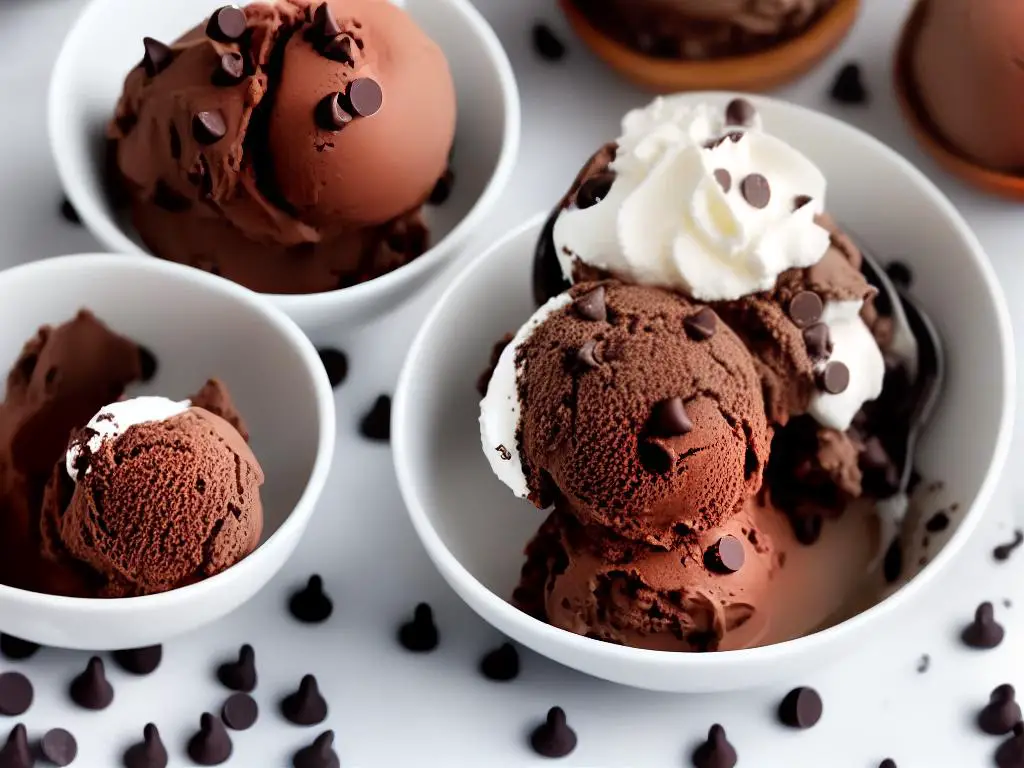
Ingredients and Flavors
This delightful frozen dessert, enjoyed by both children and adults, is made using key ingredients such as milk, cream, sugar, and cocoa powder or chocolate. The type of chocolate used can vary depending on the desired flavor, with options like dark, milk, or white chocolate. Each type of chocolate offers a distinct taste, with dark chocolate providing a rich and bitter flavor, milk chocolate giving a creamy and sweet experience, and white chocolate delivering a smooth and light taste to the ice cream.
In addition to the chocolate, other ingredients may be added to enhance the flavor and texture of the ice cream. One popular addition is vanilla, as it complements the chocolate taste and adds depth to the overall flavor. Furthermore, some recipes also call for the use of eggs or egg yolks. These not only help to create a custard-like base for the ice cream but also give it a richer and creamier texture. The choice of sweeteners may also vary, with some opting for granulated sugar, while others may use alternative sweeteners such as honey, maple syrup, or corn syrup.
There are numerous variations of chocolate ice cream that incorporate different mix-ins, such as nuts and fruits. For example, adding chopped almonds, pecans, or hazelnuts can give the ice cream a delightful crunch and nutty flavor. Similarly, incorporating dried fruits like cherries, raisins, or cranberries can create a unique flavor combination and added texture. Alternatively, adding pieces of cookies, brownies, or chocolate chips can also elevate the ice cream to new heights, making it even more indulgent and delicious.
Some chocolate ice cream recipes utilize different flavor combinations or techniques to create a distinct taste. For example, the use of spices like cinnamon, nutmeg, or chili powder can add an interesting kick to the chocolate flavor. Some may also experiment with incorporating coffee or liqueurs such as rum or Irish cream for a more sophisticated, adult-friendly taste. Another innovative variation is the use of unconventional ingredients like avocado or coconut milk, which can create a dairy-free and vegan-friendly chocolate ice cream option.
Chocolate ice cream is a popular frozen dessert that combines the rich flavors of chocolate and cream. It is made by blending milk, cream, sugar, and cocoa powder, and then freezing and churning the mixture to create a smooth and creamy texture. Chocolate ice cream is beloved by many for its indulgent taste and can be enjoyed in a variety of forms, such as in a cone, a cup, or even in a sundae with delicious toppings.
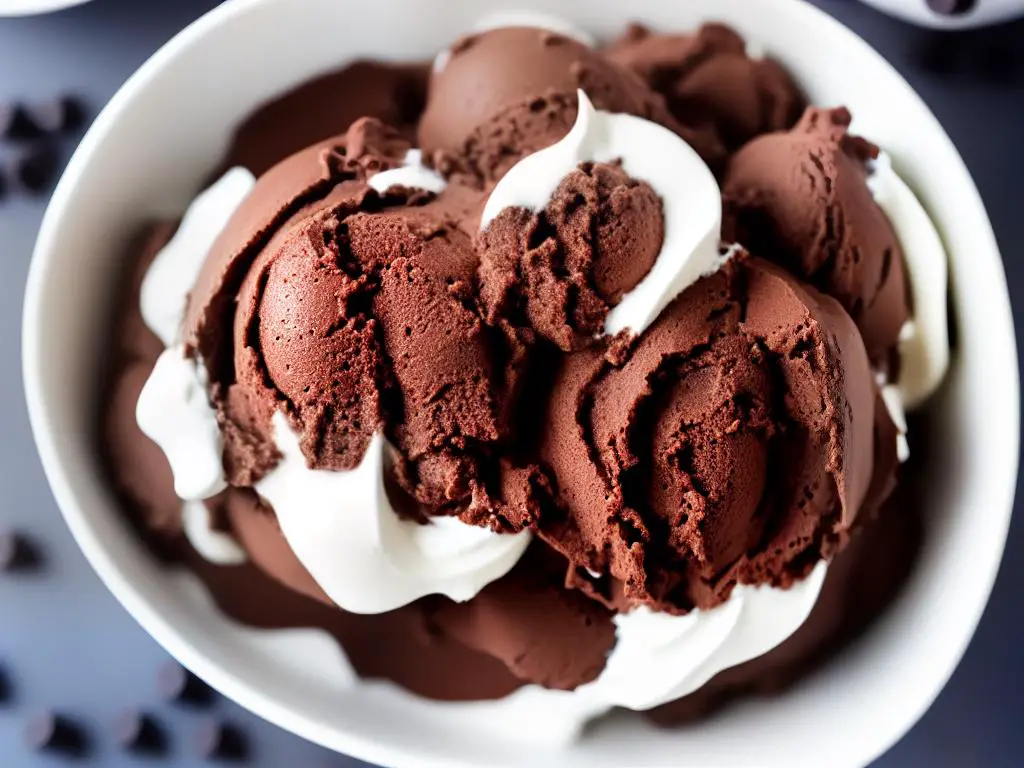
Production Process
An alternative to traditional chocolate ice cream is chocolate frozen yogurt. Made with yogurt instead of milk and cream, it is a lower-fat option that offers the same delicious chocolate flavor. The tangy taste of yogurt gives frozen yogurt a distinctive, lighter texture than ice cream, making it a unique and refreshing dessert choice. As with ice cream, there can be various mix-ins added to frozen yogurt, opening up the possibilities for an assortment of flavor combinations and customizations to enjoy while savoring this frozen treat.
Preparation of Base Mixture
The first step in making chocolate ice cream involves preparing the base mixture. The base typically consists of milk, cream, and sugar. The milk and cream are heated to a specific temperature, which helps in dissolving the sugar completely. Next, cocoa powder or melted chocolate is added to the mixture, giving it the signature chocolate flavor. It is essential to blend the ingredients well to ensure a smooth and consistent texture. Some recipes might also include egg yolks, which are whisked and slowly incorporated into the base mixture for a richer and creamier texture.
Freezing and Churning
Once the base mixture is prepared, it is important to allow it to cool down before the freezing process. The mixture is usually refrigerated for a few hours, or even better, overnight. This step helps the flavors meld together and ensures that the mixture is cold enough for churning. Churning is the process of adding air and breaking up ice crystals, which is crucial for creating the desired creamy and smooth texture in the ice cream.
After the base mixture has been adequately chilled, it is poured into an ice cream maker or churner. As the mixture freezes, the machine continuously churns and aerates the ice cream. The churning process can take anywhere from 20 to 45 minutes, depending on the ice cream maker being used. Watch closely for the mixture to reach a soft-serve consistency, which indicates that the churning process is complete.
Final Freezing and Add-ins
Once the churning process is finished, the chocolate ice cream is transferred to an airtight container for the final freezing stage. The ice cream is typically stored in a freezer for several hours or overnight to reach a firm consistency. The final product should have a rich chocolate flavor, with a smooth and creamy texture.
In addition to the essential steps described above, various add-ins or flavor enhancers can be incorporated into the chocolate ice cream recipe. Examples include chocolate chips, nuts, marshmallows, or swirls of caramel or fudge. These ingredients should be gently folded into the ice cream during the final moments of churning or after the churning process is complete, just before transferring the ice cream to its final storage container. Experimenting with different flavor combinations and add-ins allows for a myriad of delicious chocolate ice cream creations to enjoy.
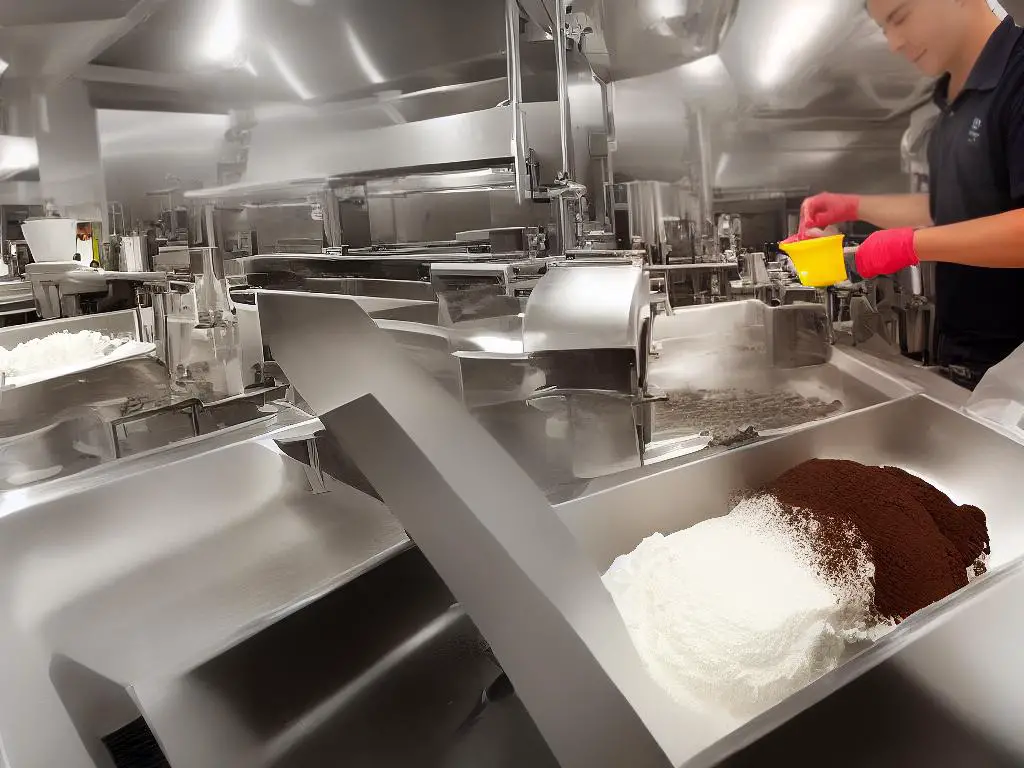
Nutritional Facts and Health Impact
As a beloved dessert for people of all ages, chocolate ice cream’s nutritional content is essential to consider. One of the main components of its nutritional content is the calorie count. One serving, which is typically around 1/2 cup, contains approximately 150 to 250 calories. This can vary depending on the brand and recipe, with lower calorie options often available. However, it’s important to remember that consuming excess calories can contribute to weight gain. So, it’s best to enjoy the delicious and versatile chocolate ice cream in moderation, taking advantage of the creative add-ins and flavors without compromising your health.
Another important aspect of chocolate ice cream’s nutritional content is its fat content. Most of the fat found in this dessert is saturated fat, which can raise levels of LDL, or "bad," cholesterol in the body. One serving of chocolate ice cream can contain anywhere from 8 to 12 grams of total fat, with around 4 to 6 grams of saturated fat. Because high LDL cholesterol levels can increase the risk of heart disease, it’s recommended to limit saturated fat intake to less than 10% of total caloric intake per day.
Sugar, another key component of chocolate ice cream’s nutritional profile, is also a major concern for many people. One serving of this dessert can have around 15 to 25 grams of sugar, which is equivalent to about 5-9 teaspoons. Consuming too much sugar can lead to several health issues, such as obesity, type 2 diabetes, and tooth decay. Therefore, it’s essential to monitor and limit your sugar intake, regardless of whether it comes from chocolate ice cream or other sources.
In terms of protein, chocolate ice cream typically offers a modest dose, ranging from 2 to 5 grams per serving. While each serving may not contribute significantly to your daily protein needs, it can still be considered a source of this essential nutrient. Protein is important for maintaining muscle mass, supporting the immune system, and providing energy, among other functions.
Chocolate ice cream, a favorite dessert for many, does contain some healthful components despite its nutritional drawbacks. For example, chocolate has antioxidants known as flavonoids, which may help protect the body against the damaging effects of free radicals. Additionally, the milk in ice cream provides calcium, essential for strong bones and teeth, and vitamin D, which aids in calcium absorption. However, these nutrients should not be used as justification for overindulging in chocolate ice cream. Enjoy this treat in moderation as part of a well-rounded, nutritious diet.
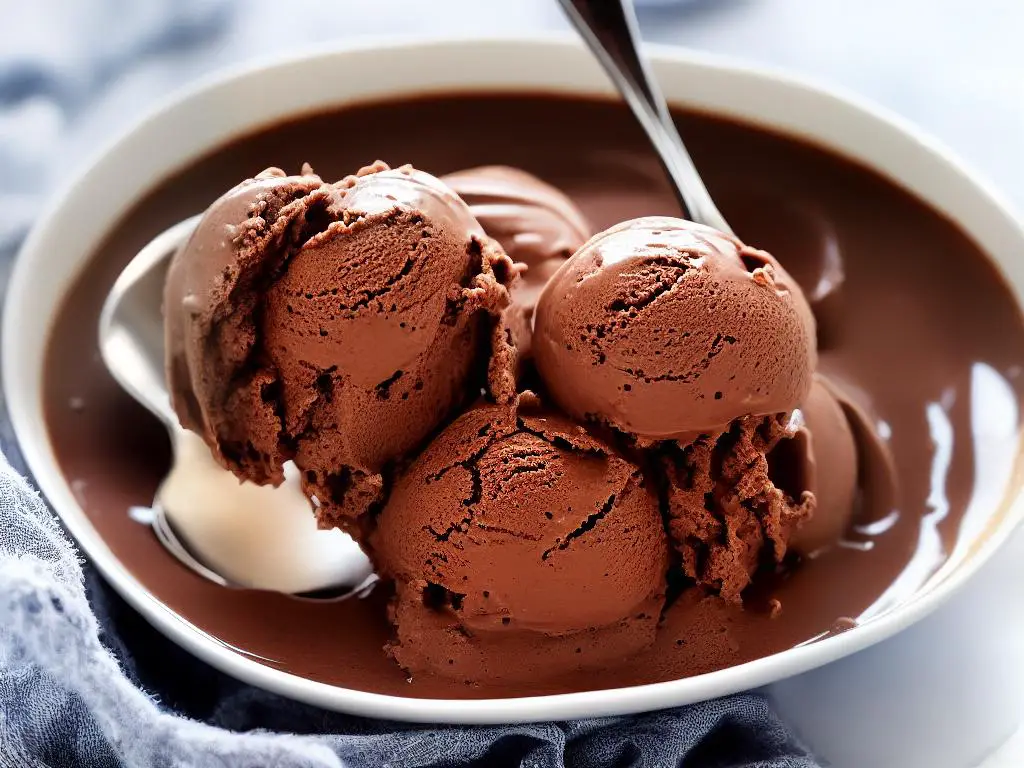
Popular Brands and Homemade Options
A perfect example of irresistible chocolate ice cream treats is the widely loved American brand, Ben & Jerry’s, which offers a range of delectable chocolate ice cream flavors. One of their popular flavors is ‘Chocolate Fudge Brownie,’ a delightful mix of rich chocolate ice cream with chunks of fudgy brownies incorporated. This flavor is a favorite among chocolate lovers due to its intense chocolate taste and satisfying mix of textures.
Another unique and mouth-watering flavor offered by Ben & Jerry’s is ‘Chocolate Therapy,’ which blends chocolate ice cream with chocolate cookies and swirls of chocolate pudding. Fans of chocolaty indulgence find this concoction absolutely satisfying and enjoyable.
Another popular brand, Häagen-Dazs, is known for its velvety-smooth chocolate ice cream.
Their “Chocolate Chocolate Chip” ice cream combines a rich, creamy chocolate base with numerous chocolate chips dispersed throughout.
The result is a well-balanced chocolate flavor that has an equal amount of creaminess and chocolate intensity.
Häagen-Dazs also offers a “Midnight Cookies & Cream” flavor, which mixes deep, dark chocolate ice cream with generous chunks of chocolate cookie.
This combination creates a delightful contrast between the smooth chocolate base and the crunchy cookies.
Breyers is another American favorite when it comes to chocolate ice cream.
One of their standout flavors is the classic “Chocolate,” which features a simpler, more straightforward chocolate profile compared to the more indulgent flavors offered by Ben & Jerry’s and Häagen-Dazs.
Breyers chocolate ice cream is known for its light and airy texture due to their incorporation of more air in the churning process.
This results in a less dense but still satisfying chocolate ice cream experience.
Moreover, Breyers places a strong emphasis on using natural ingredients, which means that their ice cream contains no artificial flavors or colors.
For those who prefer a more hands-on approach, making homemade chocolate ice cream is an excellent way to tailor the flavor and texture to personal preferences.
Classic recipes typically call for a combination of heavy cream, milk, sugar, chocolate (either cocoa powder or melted chocolate), and a touch of vanilla extract.
By controlling the ratio of cream to milk, the final product can be adjusted to have a desired level of richness.
Additionally, when making chocolate ice cream from scratch, the type and quality of chocolate used can dramatically influence the end result.
Aside from experimenting with ingredients, homemade chocolate ice cream can be taken to the next level by incorporating various mix-ins and toppings.
Popular options include brownie chunks, chocolate chips, cookie dough pieces, or even swirls of caramel or fudge.
Another creative idea is to infuse the ice cream base with unique flavors, such as chili, spices, or herbs, to create an unexpected twist on the classic chocolate ice cream.
The possibilities are endless when it comes to making a one-of-a-kind batch of frozen deliciousness.
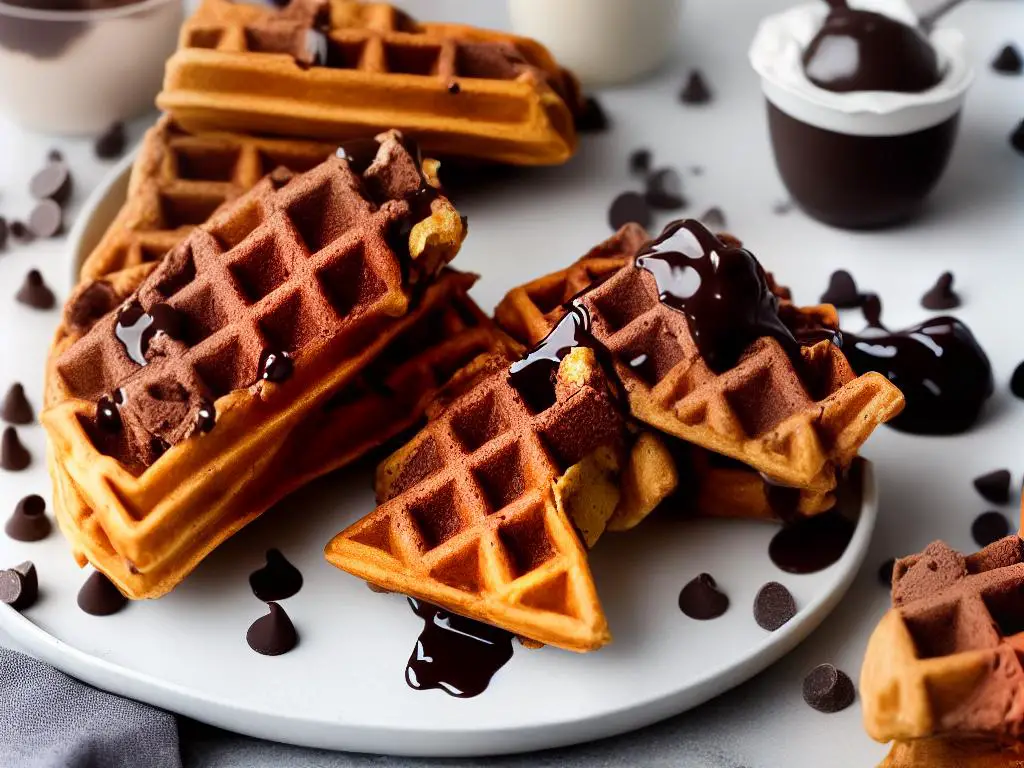
Through this exploration, we have discovered the fascinating history behind chocolate ice cream, the various ingredients and flavors that contribute to its delightful taste, and the meticulous processes involved in its production. We also discussed the nutritional aspects of this dessert and the impact it has on our health, and took a look at popular brands along with homemade options. The next time you enjoy a scoop of chocolate ice cream, take a moment to appreciate the incredible journey it has undergone to become the mouth-watering dessert that we all know and love today.